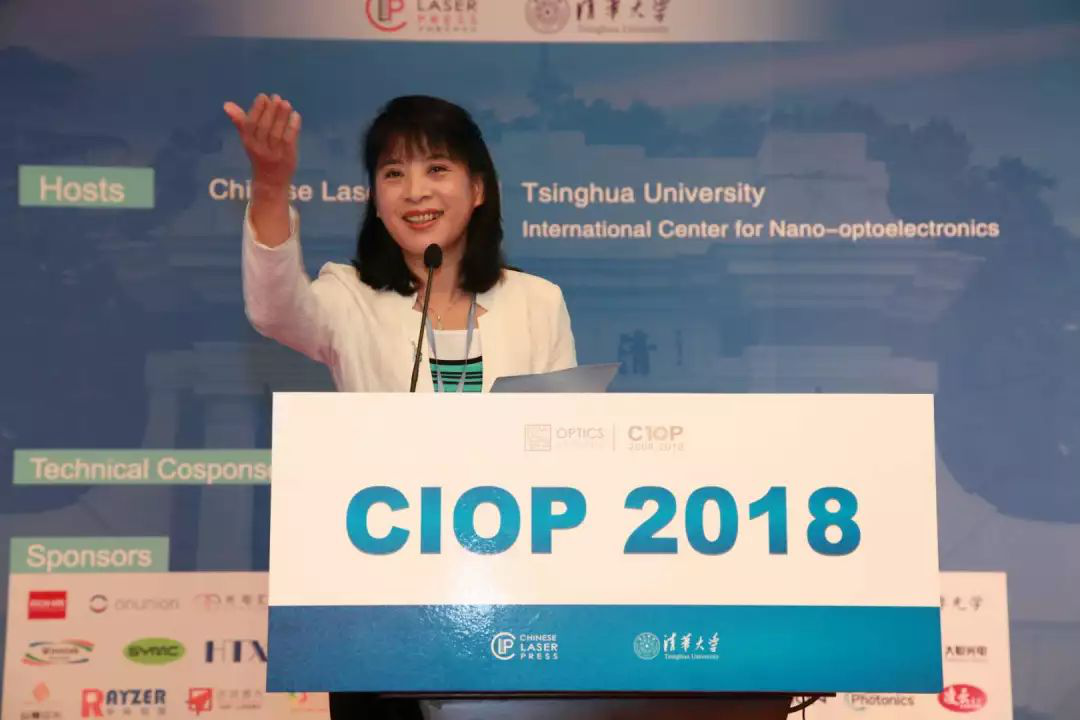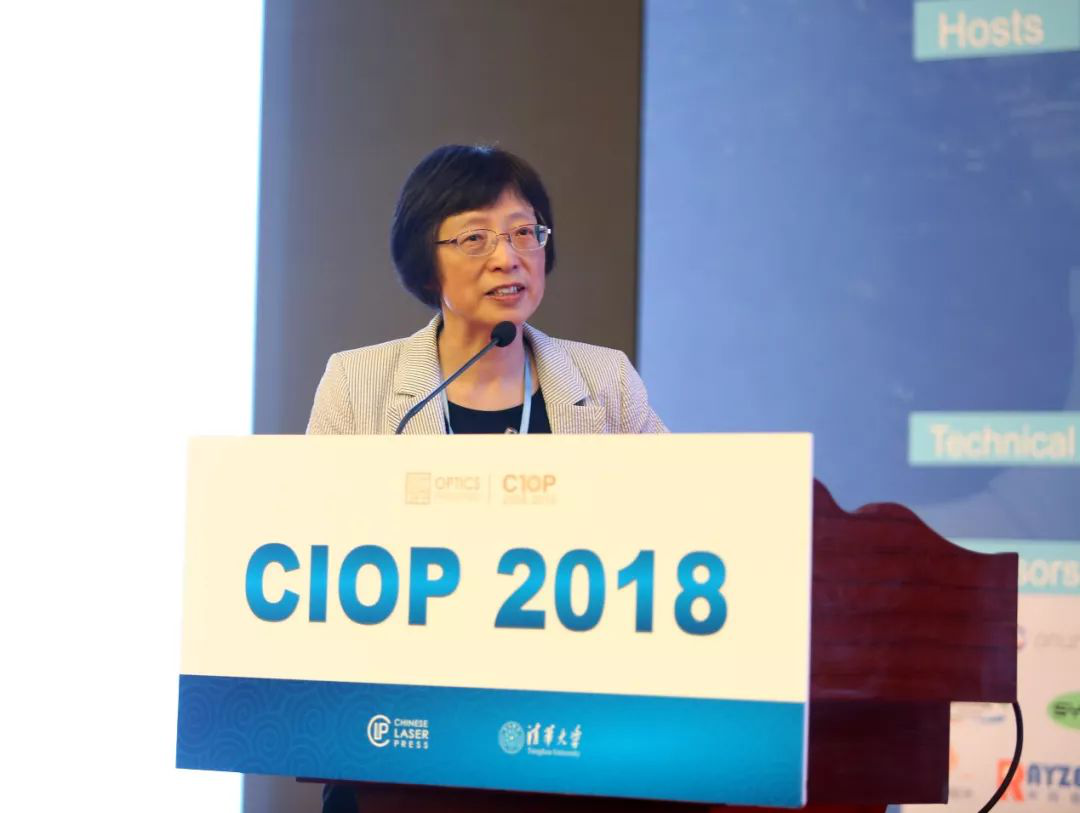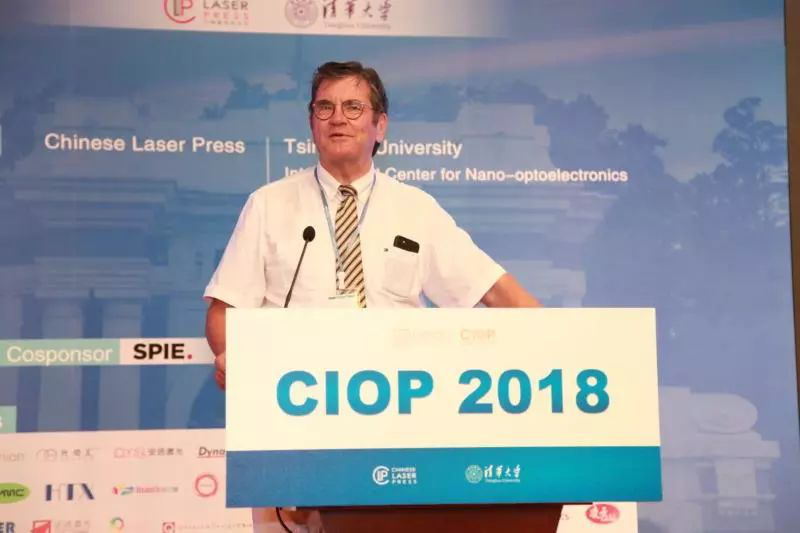On July 9, the 10th International Conference on Information Optics and Photonics (CIOP 2018) was held in Beijing. Academician Zhou Bingkun, Chairman of the Conference, Former President of Chinese Optical Society, and Editor in Chief ofChinese Journal of Lasers, from Tsinghua University, Academician You Zheng, Vice President of Tsinghua University, Deputy Director Zhang Guanlian from Beijing Municipal Science & Technology Commission, Deputy Inspector He Jie and Director Pan Qing from the Department of Information Sciences, National Natural Science Foundation of China, Academician Dieter Bimberg from Berlin Institute of Technology, Germany, Academician Bao Xiaoyi, Chairman of the Technical Committee of the Conference from University of Ottawa, Academician Gu Min from Royal Melbourne Institute of Technology, Australia and Ning Cunzheng, Director of Tsinghua International Center for Nano-optoelectronics, et al. attended the opening ceremony. The conference was presided over by the Executive Chairman, Professor Huang Yidong from Tsinghua University.
Academician You Zheng and Director Zhang Guanglian delivered opening speeches respectively. Nearly 800 Chinese and foreign experts and enterprise representatives from China, the United States, Germany, the United Kingdom, Japan, South Korea, and Singapore and so on attended the conference.

Academician Gu Min, Professor Huang Yidong, Academician Bao Xiaoyi, and Academician Dieter Bimberg made special reports on photon angular momentum, new functional optoelectronic devices, grating technology, and vertical cavity surface emitting lasers respectively.
Photon angular momentum: a significant breakthrough of nano-information optics

Orbital angular momentum is believed to be a new degree of freedom of light. The team of Academician Gu Min has done a series of excellent work:
(1)A new concept of OAM of plasma-manipulated light in nanoscale has been proposed, and the sensitivity of non-resonant angular momentum mode sorting has been discovered by designing the nanostructure of plasma.
(2)A non-absorptive dual-signal ring dichroism (BCD) spectrum has been proposed, which achieves near uniformity in the visible and near-infrared wavelength ranges. This work has opened up an exciting way for ultra-sensitive OMA-dependent stereochemistry.
(3)A new CMOS integrable OAM nanomechanics concept has been demonstrated, through the space engineering of the OAM mode of plasma in an ultra-thin CMOS compatible topological insulator film, this concept allows efficient classification and separation of OAM modes in the nanoscale.
Generalized energy band regulation: next generation of new functional devices

The working principle of all optoelectronic devices is based on the interaction between light and matter. The emergence of the next generation of optoelectronic devices depends on people's understanding and discovery of the new mechanisms of the interaction between light and matter. The research on the mechanism of many novel optoelectronic characteristics in nanostructures is of great significance to the development of nano-optoelectronic devices.
Professor Huang Yidong introduced in the report that in comparison with the energy band structure of electrons in crystals, the energy-momentum relationship of various particles and quasi-particles can be regarded as a "generalized energy band". The mechanism for the emergence of novel optoelectronic characteristics in nanostructures is precisely the generalized energy band that can regulate various elementary particles and their related quasi-particles. Through conducting the generalized energy band regulation of photons, phonons, and surface plasmon polaritons and so on, novel optoelectronic characteristics different from traditional materials and their applications in new functional devices can be obtained.
(1)The coupling between defect modes in the photonic crystal waveguide can form a micro-band gap of the photonic energy band, the position of which is very sensitive to changes in refractive index. The research group of Professor Huang Yidong has proposed and developed an ultra-small broadband slow optical waveguide optical switch (bandwidth> 24 nm, extinction ratio> 15 dB, 17 microns long) that uses micro-band gap regulation.
(2)Photoacoustic crystals can simultaneously achieve the regulation of photons and phonons, which has important application prospects in the precision measurement field. The team led by Professor Huang Yidong has researched and developed a photoacoustic crystal cantilever microcavity structure, which has successfully observed the lasing phenomenon of phonons with a frequency as high as 5.91 GHz.
(3)The research group of Professor Huang Yidong creatively proposed and verified threshold-free Cherenkov radiation in hyperbolic metamaterials, and developed the first free electron light source integrated on a chip in the world, with a wavelength covering 500~900 nm and the electron energy of only 0.25 eV.
Grating technology: irregular structure in communication optical fiber and composite optical fiber

Communication optical fiber is specially designed for long-distance high-speed communication transmission, with the advantages of low loss, low nonlinear distortion and easy operation. In order to increase the functions of the optical fiber, the work done by the team of Professor Bao Xiaoyi included:
(1)A grating production technology, which forms lots of random holes through the introduction of uneven points in the wavelength range into the optical fiber, thus generating laser of the ultra-high density mode, and reducing the coherence of the light source.
(2)A special optical fiber with a dual-core chalcogenide as the core and PMMA as the cladding is designed, namely, the so-called composite optical fiber, eliminating the crosstalk of the strain or temperature sensor caused by the phase shift brought by the temperature and strain changes in the optical fiber interferometry.
(3)Optical fiber sensors and optical fiber equipment that are not sensitive to temperature are successfully produced through using the heat from the cladding generated by the changes of the length of the optical fiber in different directions caused by heat.
(4)In order to improve the sensitivity, the team designed an asymmetric grating in the dual-core composite optical fiber. Through the coupling between the two modes, by using the slow light effect, an ultra-high temperature resolution at a temperature coefficient of nm/°C.
Vertical-cavity surface-emitting laser (VCSEL): key technology of the "Green Internet"

The energy required for the information coding and transmission around the world is huge. In order to reduce the energy consumption per unit data under the intercontinental distance and reduce the information transmission cost, Academician Bimberg introduced the concept of "Green Internet", of which the key optical component is the vertical-cavity surface-emitting laser (VCSEL). The research work on energy-saving VCSEL of Academician Bimberg mainly includes:
(1)Light sources of 850nm and 1310nm used for optical interconnection and optical fiber data communications.
(2)Use a compact VCSEL array with ultra-high bandwidth density in inter-chip and intra-chip optical data communication with ultra-short distance. This VCSEL design enables the data communication system to achieve the error-free transmission at a rate of more than 50 Gbps and the energy efficiency is close to 100 fJ per bit.
During the conference, 206 first-line optical experts will conduct invited lectures in 13 sessions of photonic integration and optical interconnection, advanced fiber optics and sensing technology, biomedical photonics, optical design and optical precision measurement, optical communication and optical network technology, optical imaging and holography, plasmon and metamaterials, laser and nonlinear optics, quantum optics and quantum information technology, laser micro-nano processing and manufacturing, microwave photonics, nanophotonics and 2D optoelectronics, and microcavity photomechanics.
This conference was jointly sponsored by Chinese Journal of Lasers and Tsinghua University and technically co-organized by SPIE. In the corresponding period of the conference, many activities such as optoelectronic chip industry summit forum, microelectronics and nanoelectronics optical fabrication training class, "paper image processing and techniques" lecture, and English science and technology paper writing training were also successfully held.